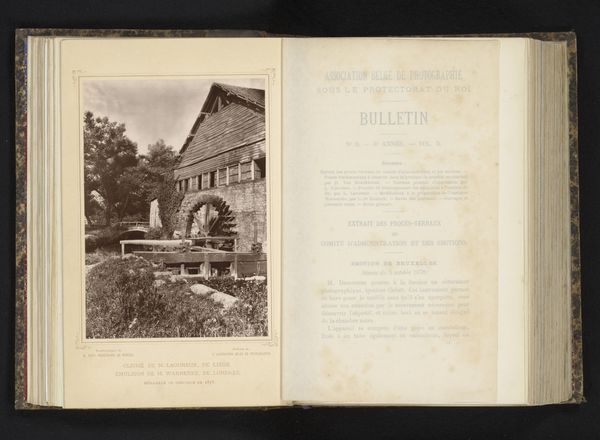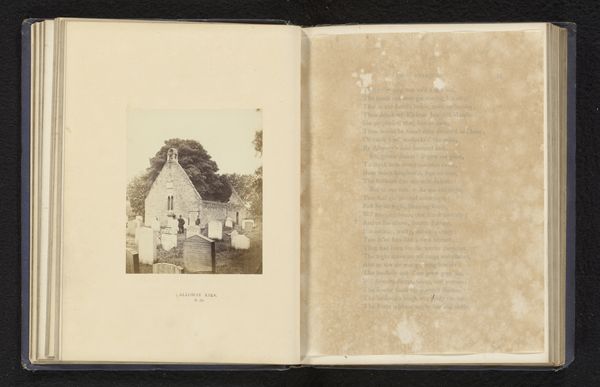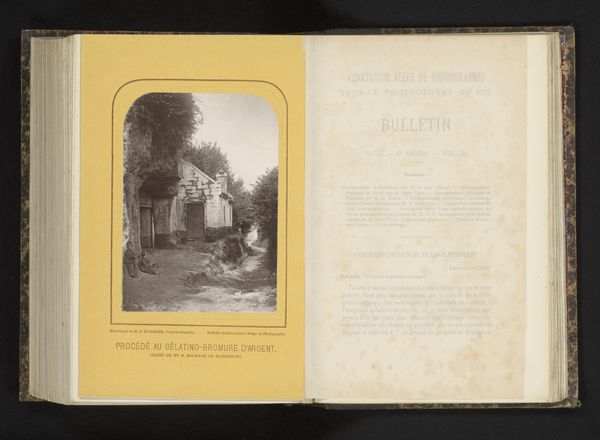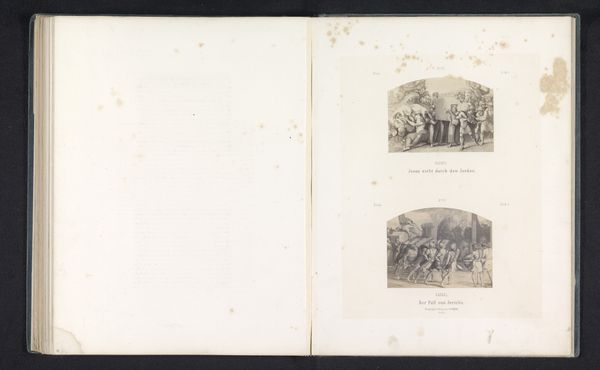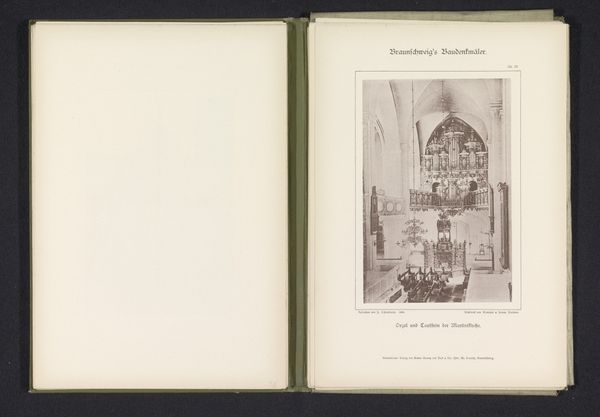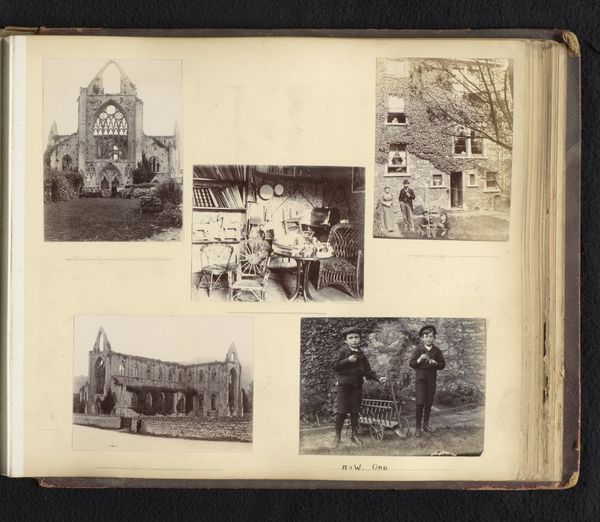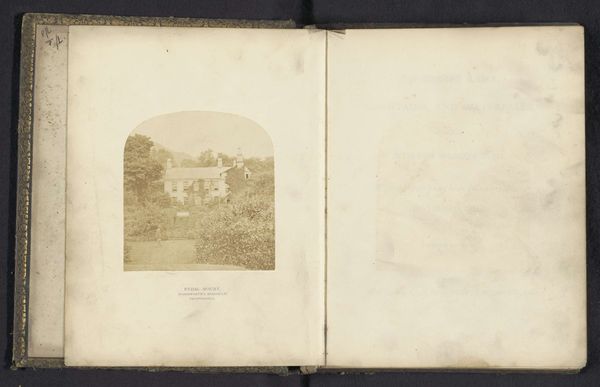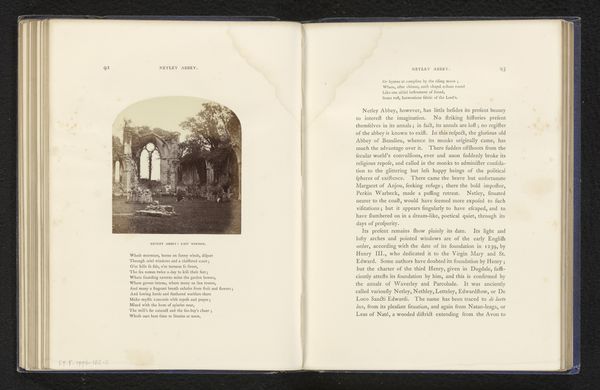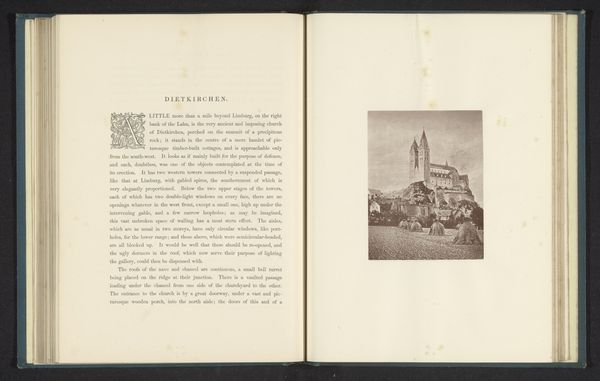
print, photography, gelatin-silver-print
# print
#
landscape
#
photography
#
gelatin-silver-print
#
genre-painting
#
modernism
#
realism
Dimensions: height 149 mm, width 98 mm
Copyright: Rijks Museum: Open Domain
Editor: So, here we have "Twee mannen regelen het waterpeil bij een watermolen, te Eijsden"—that's "Two Men Regulating the Water Level at a Watermill in Eijsden"—before 1884, by Mathias Boumans. It’s a gelatin-silver print, and it strikes me as such a peaceful scene, almost staged, in its quaintness. What grabs you when you look at this? Curator: Well, framed as a page in what looks like a publication, perhaps related to photography itself, changes the way we read the image. This is more than just a photograph; it's an image presented for public consumption, probably as an exemplar of photographic technique or as a picturesque scene. Editor: That's true; seeing it within the book, not isolated, really affects how I see it. What's interesting about this from a social or cultural point of view? Curator: Think about it this way: genre painting became popular when the rising middle class wanted artwork representing daily life. Photography democratized this idea further, bringing such scenes to a wider audience. The staged, idealized nature suggests a yearning for simpler, more 'authentic' rural existence amidst the rapid industrialization of the late 19th century. Boumans and publications such as these really shaped the visual vocabulary of idealized life. Is that something you see? Editor: Yes, absolutely! It is as if there is almost a perfect setting. Looking at this again I feel like I better grasp how images such as these become not only representative of their time, but formative in defining its ideals as well. Thanks. Curator: Agreed. Understanding the historical context, especially the rise of mass media, reveals so much about this piece and its purpose beyond simple documentation.
Comments
No comments
Be the first to comment and join the conversation on the ultimate creative platform.
